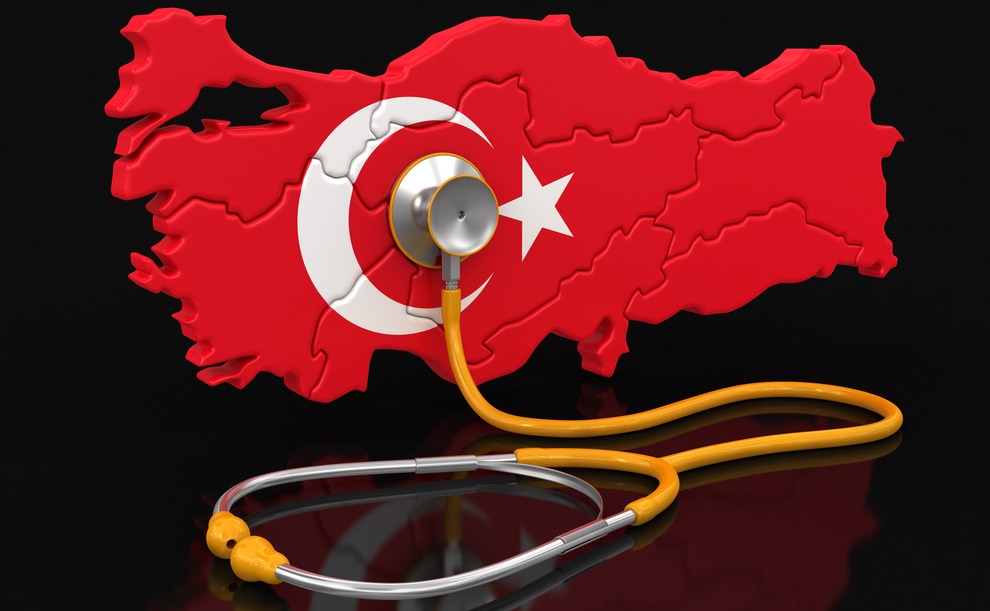Though considerably low today with an increasing and prospering population of 72,5 million, the Turkish healthcare industry offers significant opportunities for foreign medical investors
Despite challenging economic times globally,Turkish fiscal policy has been quite successful and inflation and interest rates have fallen significantly over the past years.Moreover, as part of Turkey’s bid for full membership in the European Union, there were significant changes to the regulatory structure and policy makers have been implementing a range of quality, technical and medical standards in healthcare institutions.Within this framework, health spending per capita in Turkey has grown,in real terms, by 5.8% per year on average between 2000 and 2005, one of the fastest growth rates in OECD countries, and significantly higher than the OECD average of 4.3% per year.Despite this growth trend, Turkey spent 818 USD (PPP) in 2008,compared to the OECD average of 3,060 USD.This figure alone is sufficient to express the huge potential of the Turkish market.
The main change in the Turkish healthcare environment has been the growth of private sector in the last decades.As a result of this growth, the distribution of hospitals and beds today between public and private providers is as follows:
Structure of Turkish Market (2009)
of Hospitals of Beds Share
Public 833 121,240 60%
Private 556 74,309 40%
Beginning from 1990s,private investors have been highly active in the market and in the last years,Turkish healthcare providers have been attracting an increasing number of foreign investors.Today, there are close to 10 international investment funds and groups holding interest in Turkish hospitals and clinics.
As number of private providers increases, so does employment in private sector for healthcare professionals.
Number of Doctors in Turkey (2000-2009)
| MoH | Medical Schools | Private | Total | |
| 2000 | 17.665 | 7.204 | 4.226 | 29.085 |
| 2001 | 18.839 | 7.377 | 4.036 | 30.252 |
| 2002 | 19.677 | 8.102 | 4.258 | 32.037 |
| 2003 | 21.111 | 8.484 | 4.555 | 34.150 |
| 2004 | 22.852 | 9.511 | 4.797 | 37.160 |
| 2005 | 22.893 | 9.801 | 5.542 | 38.236 |
| 2006 | 23.808 | 10.447 | 6.786 | 41.041 |
| 2007 | 37,157 | 10,891 | 15,930 | 63,978 |
| 2008 | 59,357 | 24,492 | 19,328 | 103,177 |
| 2009 | 63,622 | 25,015 | 22,574 | 111,211 |
- Source: Turkish Ministry of Health
Pharmaceutical Environment
According to the Pharmaceutical Manufacturers Association of Turkey, the Turkish prescription medications market had reached 9.1 billion USD in value and 1.42 billion in volume in 2009, representing 16.8% and 3.9% growth respectively and making Turkey the fastest-growing market in the Mediterranean.
The Turkish pharmaceutical market is rather advanced in terms of manufacturing standards, technology, and production capacity and capabilities.
Pharmaceutical companies are not only continuously audited according to the stringent Ministry of Health criteria but also are accredited by international authorities.GMP (Good Manufacturing Standards) are standards set by the World Health Organization covering the entire process of medication production and control and they were incorporated into legal rules and regulations in Turkey in 1984. Turkey is among the few countries in the world that are self-sufficient in terms of pharmaceutical supply and it ranks 16th among the world’s 35 leading pharmaceutical producing countries. There are 43 manufacturing plants in the country which are owned by multi-national companies, representing over 300 billion USD worth of foreign direct investment. Some of these multinational companies are giants such as Pfizer, Novartis, Eli Lilly, Merck, and GlaxoSmithKline.
Turkey has a strong generics industry, about half of the market in terms of volume is generics drugs. Of the 7,413 medications available in the country in 2009, over 60%(and 78% of the volume consumed)were domestically produced. Widespread use of generics and local production capabilities both contribute to the lower costs of healthcare in Turkey.
Commercial Insurance Environment
Turkish financial system in general and the insurance sector in particular have undergone major structural and regulatory changes in the past two decades, as part of the financial liberalization programs. The new Turkish insurance law, prepared in accordance with the European Union norms, was passed into effect in June 2007, resulting in a more competitive and efficient health insurance system, which works in synergy with the healthcare market.
The Turkish insurance market has witnessed impressive growth in recent years but its size is still relatively low compared to the US and Europe, primarily due to the low rate of penetration and density. These two factors offer significant potential for market growth. According to the data published by the Association of Turkish Insurance and Re-Insurance Companies, premiums generated by the insurance market in Turkey were 9.4 billion USD in 2010, representing a 14% increase over the previous year.
As of October 2010, there were 58 insurance companies and 1 re-insurance company in Turkey. Of the 58, 52 were private and 6 were publicly owned. Foreign ownership has increased significantly in the Turkish insurance industry in recent years and 45 of the private companies today have foreign owners or partners, including the global powerhouses Aviva, AIG/Chartis, Axa, Allianz, Aegon, Groupama, Ergo, and Mapfre. Multiple distribution channels are employed, including agents, brokers, direct sales teams, banks, leasing firms, and mortgage companies. Growth and innovation in the health insurance market will surely complement the advancements in healthcare provision, increasing Turkey’s global competitiveness.
Healthcare Services
Strengths of Turkish Healthcare Services
The geographical location, the medical outcomes, and the cost of the treatment have reinforced the decision of the patient or the third-party payer. The leading private hospitals in Turkey have been receiving patients from abroad: Russia, Europe, Balkan Countries, Middle East, and Central Asian countries for mainly the following procedures.
Bone Marrow Transplantation - Cardiology & Cardiovascular Surgery
- CyberKnife
- Dental Services
- Gamma Knife
- Genetics
- Neurosurgery
- Obstetrics and Gynecology
- Oncology (Medical & Surgical)
- Ophthalmology
- Orthopedics & Traumatology
- Plastic Surgery
- Reproductive Health and PGD
- Transplantation
